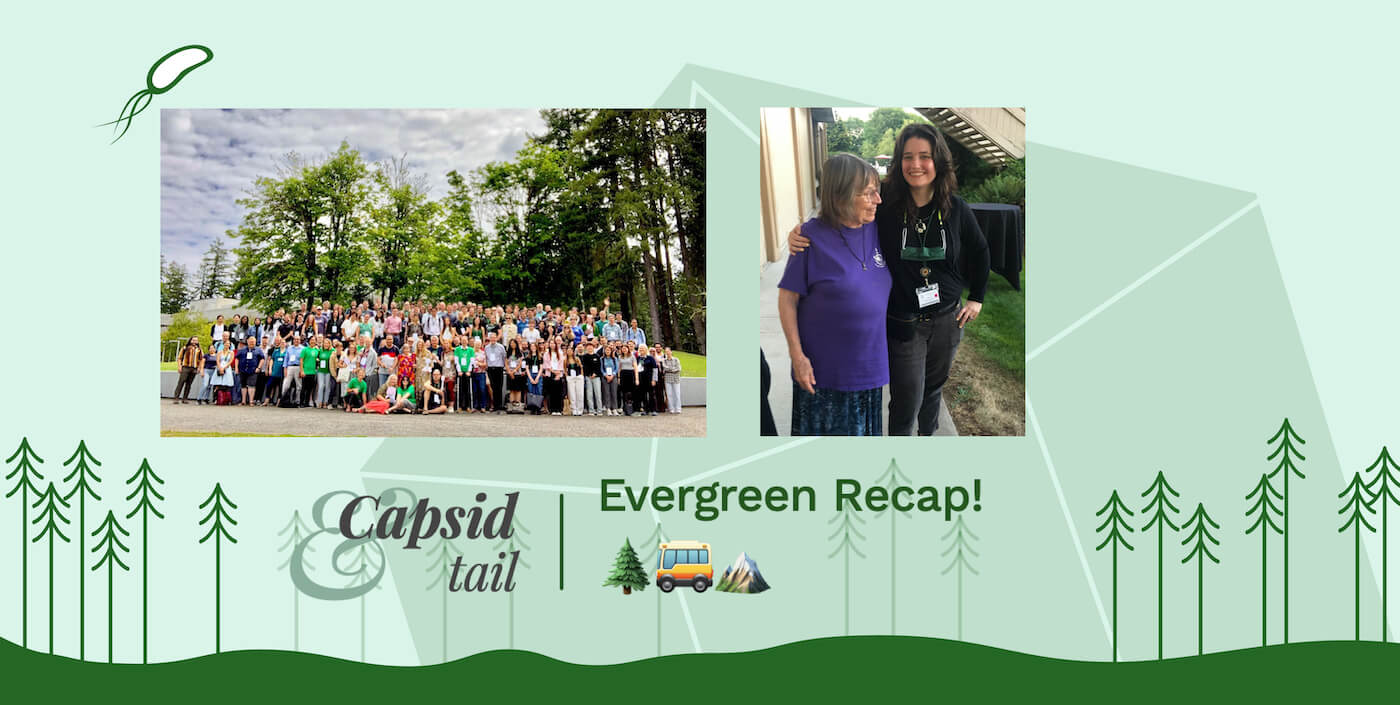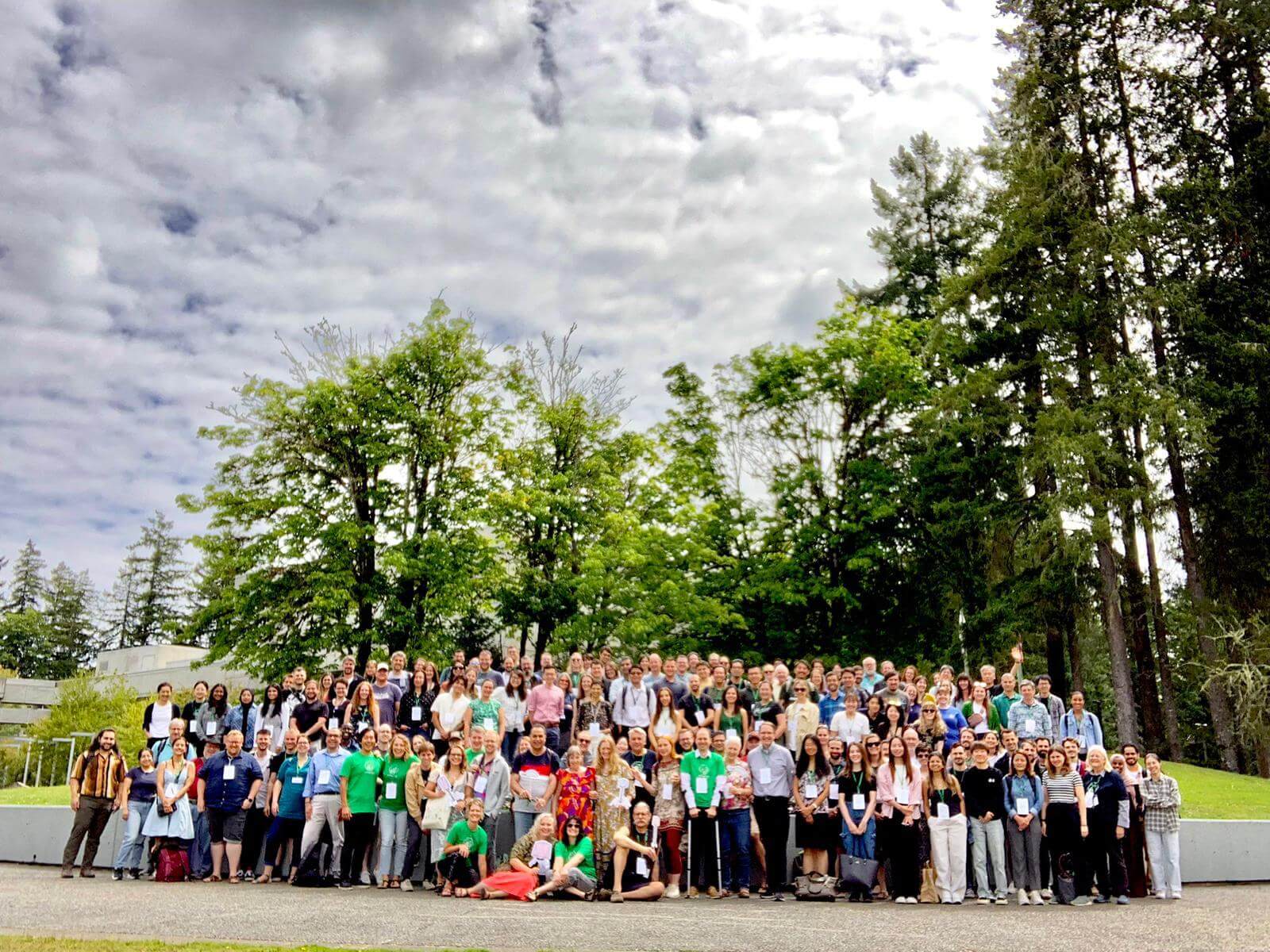
Fig 1. Group Picture!
Hi everyone,
We’re finally getting back to our regular Capsid & Tail schedule! As predicted, Evergreen was a fun (and crazy) whirlwind, and we’re finally settling back to our regular phage work.
For those who couldn’t make it this year, the 25th Evergreen Phage Meeting was a phage-centric scientific conference out in the woods, on the campus of the Evergreen State College, outside the somewhat remote town of Olympia, Washington. Because the conference is on a secluded, wooded university campus, we all stay together, eat together, and talk science together, which is why Evergreen feels so different from any other conference.
Stellar science among phage phriends

Fig 2. A special showing of Salt in my Soul, and a panel of legends: Betty Kutter, Martha Clokie, Steffanie Strathdee, and Diane Shader Smith

Fig 3. Betty, Randy Fish, and Jessica

Fig 4. The Canadians were a force to be reckoned with this year!
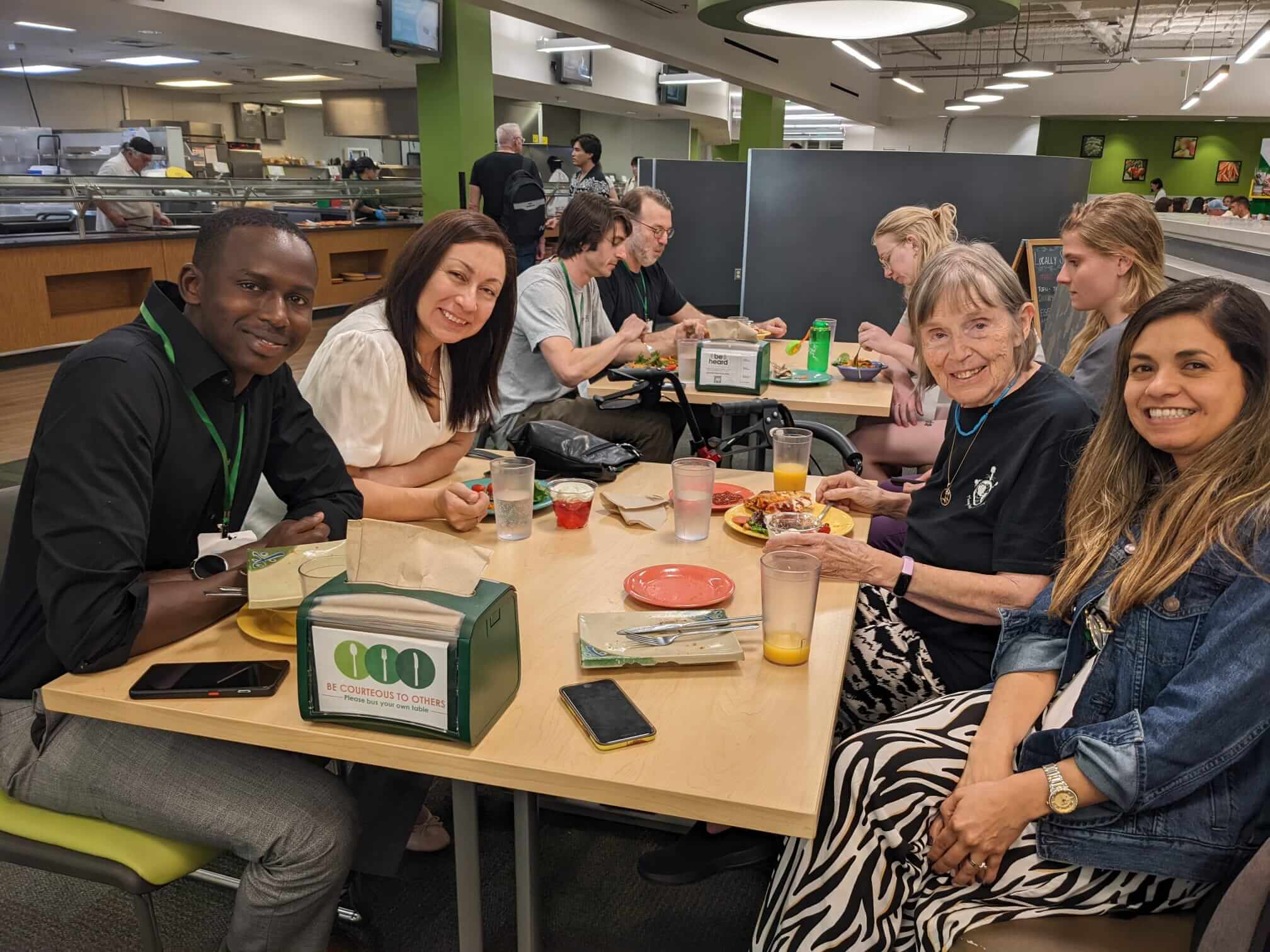
Fig 5. Sharing a meal (aka “Networking”) at the Greenery food hall

Fig 6. The special panel to commemorate Betty’s Past and Future legacy comes together for a photo op!

Fig 7. Daniela, Thomas, and the Nobrega crew assembling the Party Phage!
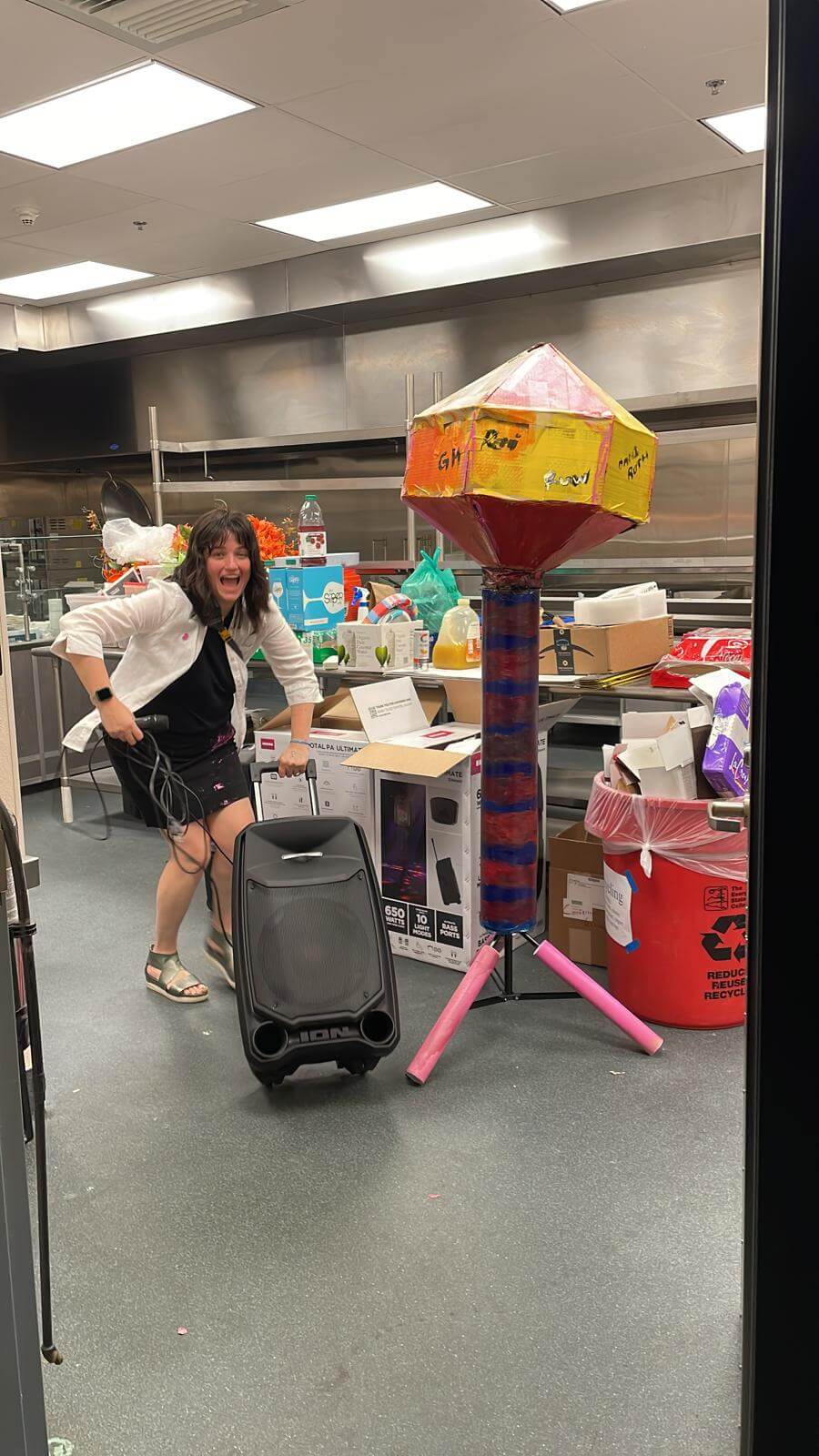
Fig 8. Ria cleaning up after the party! Party Phage standing guard over all the boxed wine…

Fig 9. Everyone’s looking up at the Perseid meteor showers!

Fig 10. Bryan Gibb and an enthusiastic team of phage hikers!

Fig 11. Most of the Evergreen Phage Crew getting ready to head over to the airport!

Fig 12. Trouble on the mountain! The bus going back to campus got stuck, which meant we were in for a long day…
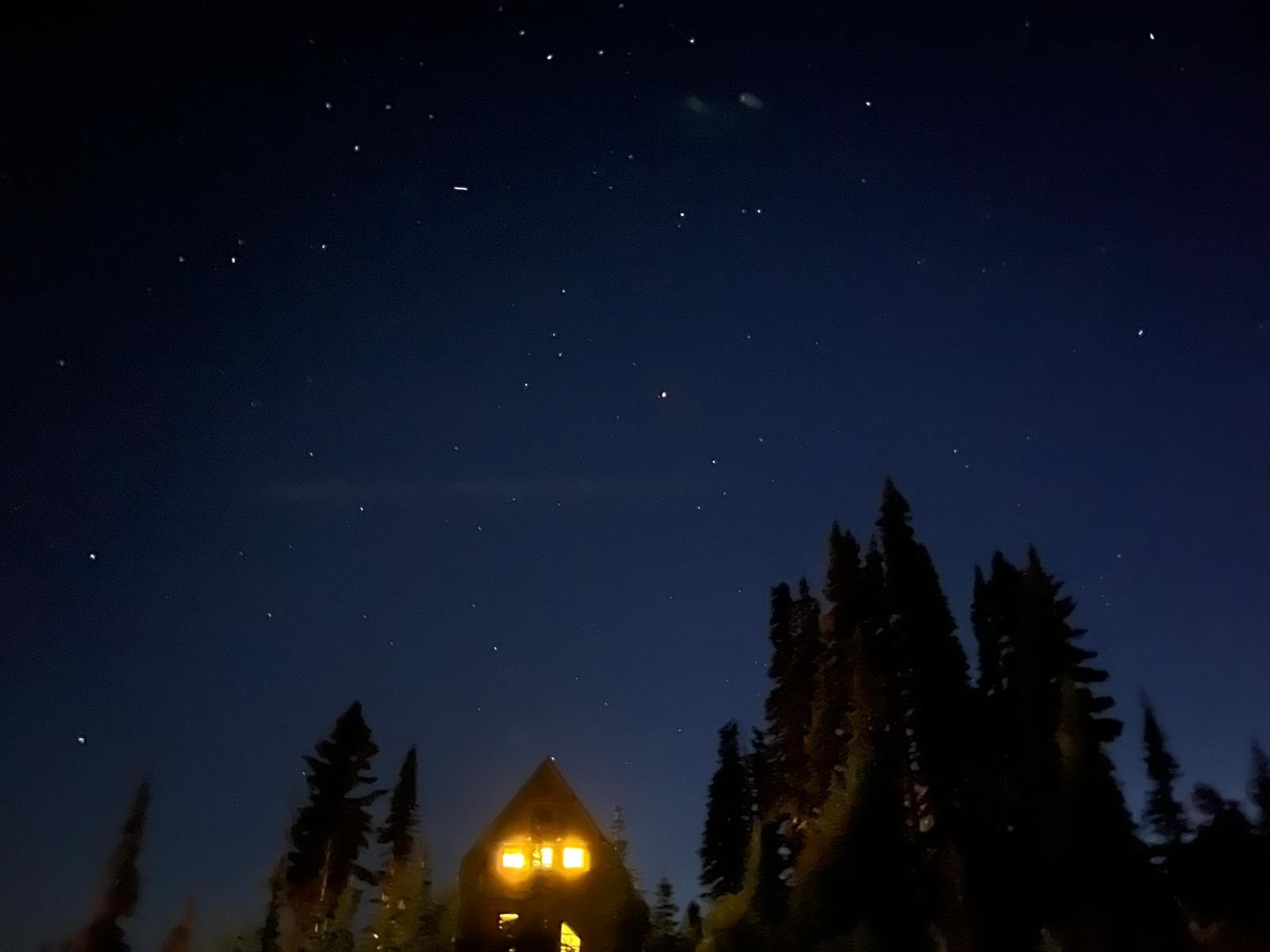
Fig 13. Getting late at Mt. Rainier… those of us going back to campus had to wait for the replacement bus or the tow truck to free the bus.
Being in the woods means you can focus all your time on talking science. We had four packed days of oral presentations from researchers around the world, ranging from seasoned professors to young PhD students’ first time presenting their research. We had more oral presentation submissions than initially estimated, which meant we had to move our schedule and shorten talks to squeeze more talks in — which allowed more scientists to present. Here’s our final schedule (after dozens of schedule changes): https://evergreen.phage.directory/schedule.
The poster rooms were also packed, with at least 100 posters on display (many oral presenters also had the opportunity to display a poster as well). I’m sure the boxed wine also helped (thanks Vésale!).
If you’d like access to the complete abstract book, please reach out to me ([email protected]).
Also, a huge congratulations to all the winners of both the oral and poster presentations:
Best Overall Oral Presentation Winner
Siân Owen — “Phage DISCOvery in technicolor reveals diverse and abundant phage populations exploiting conjugative plasmids”
Best Junior Oral Presentation Winners
Tiffany Luong — “Lost in circulation: Improving the in vivo activity of phage cocktails"
Rebecca Quinn — “Phage tRNAs Subvert Host Resistance”
Best Poster Presentation Winners
Bridget Hegarty — “Caution is needed when combining viral identification methods: Insights from benchmarking in silico approaches for viral discovery”
Nanami Kubota — “Prisoner’s dilemma: Prophage can enable their bacterial hosts to exploit cooperative bacteria and drive the population to lower fitness”
Yan-Jiun “YJ” Lee — “Weird DNA: Discovering non-canonical DNA bases and the enzymes that make them”
Other than officially sanctioned science events, Ramy Aziz from Cairo University and Johan Wikstrom from tolka.ai also played some great tunes and taught everyone salsa and bachata.
Franklin Nobrega’s awesome team (fnobregalab.org/) even went to the lengths to build a phage sculpture!
And of course, many of us were chatting phages on the sidelines, way into the night… like at that picnic table in the middle of the dorms til at least 3am every morning…
What it’s like to run a conference on an old campus in the middle of the woods
Behind the scenes, lots of little fires burned, though unseen and unfelt by most — like the AV personnel leaving us to fend for ourselves (because they either had Covid or were away on mental health leave), or the kitchen staff being severely understaffed, and refusing to stick to our contractually scheduled meal times, leaving us to scramble to move around every oral presentation each day.
Then there’s having to rush out to buy a new Macbook Air since we couldn’t access the computers in the lecture halls, and then having to emergency buy, download, and install the Mac version of Powerpoint… 30 minutes after we’re supposed to start the first talk, Monday morning. Sorry folks, “technical difficulties”…
And then there’s of course Mt. Rainier Bus Gate, where the last charter bus that was supposed to pick us up from Mt. Rainier somehow took a wrong turn and got stuck on a winding road. Then the replacement bus, which was supposed to arrive at the mountain three hours later, somehow ended up on the wrong side of the mountain and needed yet another three hours to get to our side. So after six hours of waiting, they finally got the first bus unstuck… and we finally got home around midnight. Thankfully, we got to share drinks by the fire in a fancy hotel, star gazing in Mt. Rainier (it feels romantic writing about it now, but it was stressful at the time!).
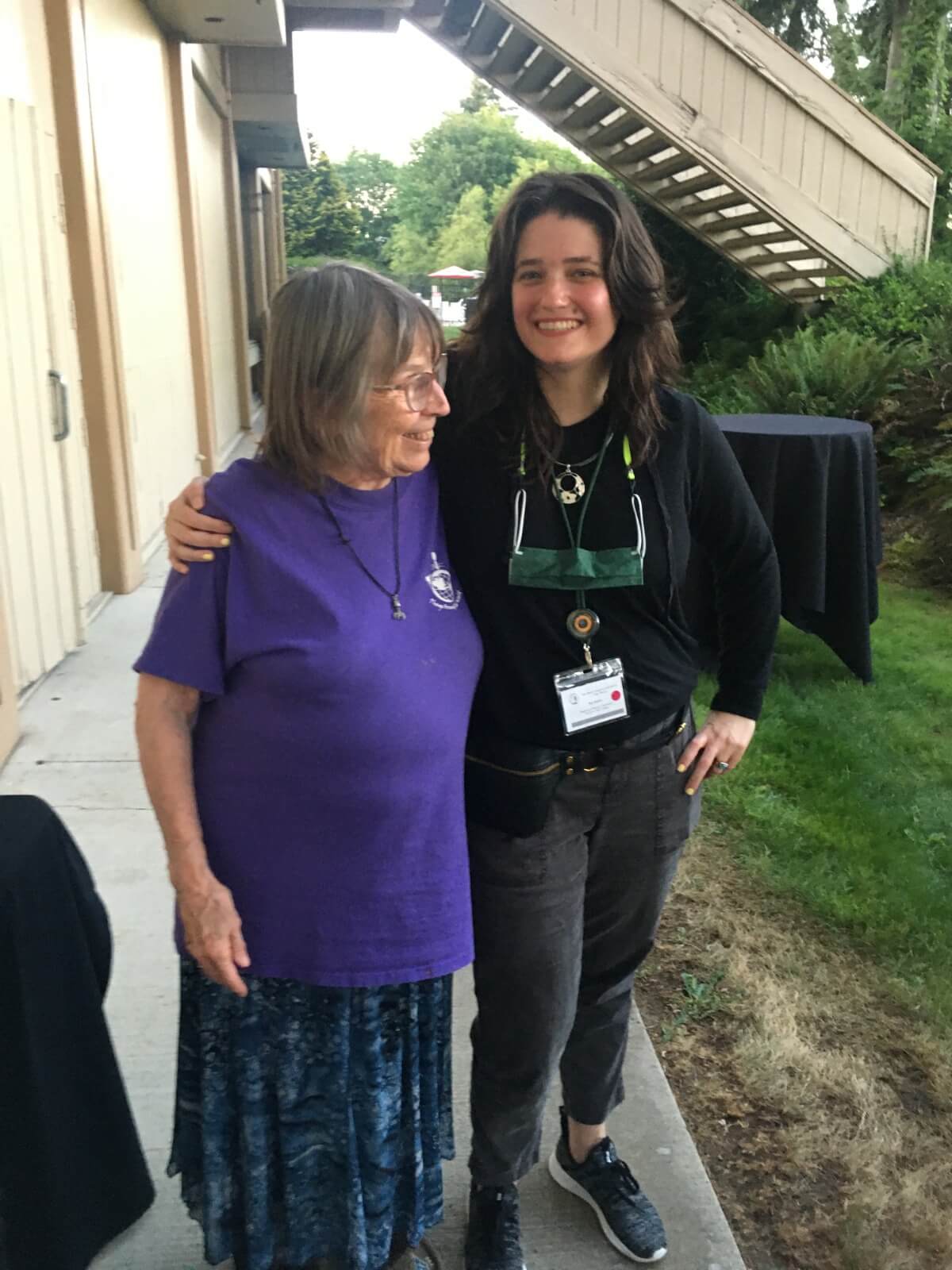
Fig 14. Ria and Betty
Conference planning learnings, in no particular order
- A meeting in the woods creates a magical vibe — you’re far from urban distractions, get to spend time with people similar to you, and build better friendships — but Olympia is such a difficult and expensive to get to. I think it’s worth the hassle to set up a conference in something that isn’t a Marriott hotel, but there are towns that are easier to access (e.g. with better train access to the airport).
- WhatsApp to the rescue! Almost all attendees were on our WhatsApp channel, which meant we could get answers fasters. It also helps attendees help each other, like way finding. That’s how we (including us organizers!) found out the dining hall decided to open later than planned. A WhatsApp also led to other shenanigans, like everyone as a group trying to figure out how to get hot water in the showers.
- Getting to and from the conference: When you do a conference in the middle of nowhere, with few transportation options… transportation can get tricky and expensive. Having a WhatsApp helped people organize car pools and save costs. If we didn’t have coordinated housing, this would have helped people find hotel roommates too.
- Food in the before and after-hours: There’s also scant food options on a campus in the woods, outside of dining hall hours. We planned for a ton of food and snacks and coffee throughout the day, and beer/wine/more snacks in the evenings for the rooftop library gatherings.
- Google sheets of contacts — created after the conference due to popular demand, everyone gets to share what they want about themselves, like Linkedin or twitter or jobs and asks — in a publicly editable Google Sheet. This gets around GDPR and other issues, and is very easy to do. Sometimes low-tech gets the job done.
- Invoices take a very long time to process, especially during summers when staff is on holiday. International SWIFT transfers are especially annoying to coordinate, so be aware of that if you plan on immediately using revenue for things like food or accommodations.
- Please plan ahead of time, and if possible, don’t start planning a conference four months before launch. (Fun fact: Jeremy Barr’s VoM 2024 (vom2024.org) started planning before we did, and theirs is in 2024). (We had to work around Betty’s unexpected health issues unfortunately, which led to our delays.)
- Planning late also means there’s short time for the scientific committee to meet and plan and coordinate properly, with enough time buffer between end of abstract submissions, rating, and talk scheduling.
- Make Everything Digital: announcements, schedule, registration, abstract submission system, abstract book, and payments (Stripe). This allowed for quickly checking and correcting information as they came in — and telling most people to check the website on their phones.
- Make Everything Easily Editable: I built a connector from our Notion docs to the Evergreen website, so every time the schedule changed or we had an announcement, we could make the change on our phones, on the ground. The site would show it in real time. The schedule probably changed dozens of times every day, for various reasons… so a system like this (along with WhatsApp) helped us communicate all the changes. Even though this makes the website load a bit slower (hence the “Stream Loading” message), it keeps everyone up to speed.
- Use a good Content Management System for everything: ****We also tracked all registrations and abstracts through Airtable (all forms on the site are connected to Airtable), along with hikers and Stripe payments. This allowed us to track registrations, abstract submissions, and Stripe sign ups in real time (a Stripe payment triggered a web hook, which updated our Airtable).
- Use automation wherever possible: from Stripe payments and registration tracking to abstract submissions content cleanup (using the GPT-4 API) to visa letter generation. Use easily editable templates where possible (for visa letters and invoices) connected to your data, which saves a lot of time. This enabled us as a tiny three-person team to run an entire week-long science conference event.
- Make sure the tech works! Unfortunately the dedicated AV staff had Covid, which meant we couldn’t physically access some of the gear — like the built-in computers that ran the AV. So we had to rush out to Costco and buy a backup laptop. We tested it several times — everything worked… except, we forgot to put Powerpoint on it. And getting Powerpoint nowadays (with its subscription system) is a massive undertaking. So while people were waiting for the first session to start, Monday morning… we were actually in a mad dash to buy and install a fresh copy of Powerpoint! So when you run your event — make sure your your entire software stack is installed, and that you also have enough dongles (and can receive thumb drives!) before your talks start!
What’s next for the Evergreen Phage Meeting?
The Phagebiotics Board members are figuring out what’s next! The massive success of Evergreen this year inspired everyone to consider a new home for Evergreen Phage Meeting in 2025, perhaps in the style of Viruses of Microbes, where it travels to a new site every time.
No matter where we’ll choose to host the next Evergreen, we decided to preserve everything that makes Evergreen feel like Evergreen: phage science among phage friends, surrounded by Evergreen forests.
So stay tuned for Evergreen 2025! We promise we’ll start planning the next meeting sooner… 😉
Oh, and if you attended Evergreen, please fill out our survey! Or share the link with others, so we can make the next one even better: https://docs.google.com/forms/d/e/1FAIpQLSe3RM1ctIAjFtV8UxvwEvPs8DqLmp2F_ukbXDeu8M-1XlnXmQ/viewform
See ya next time!
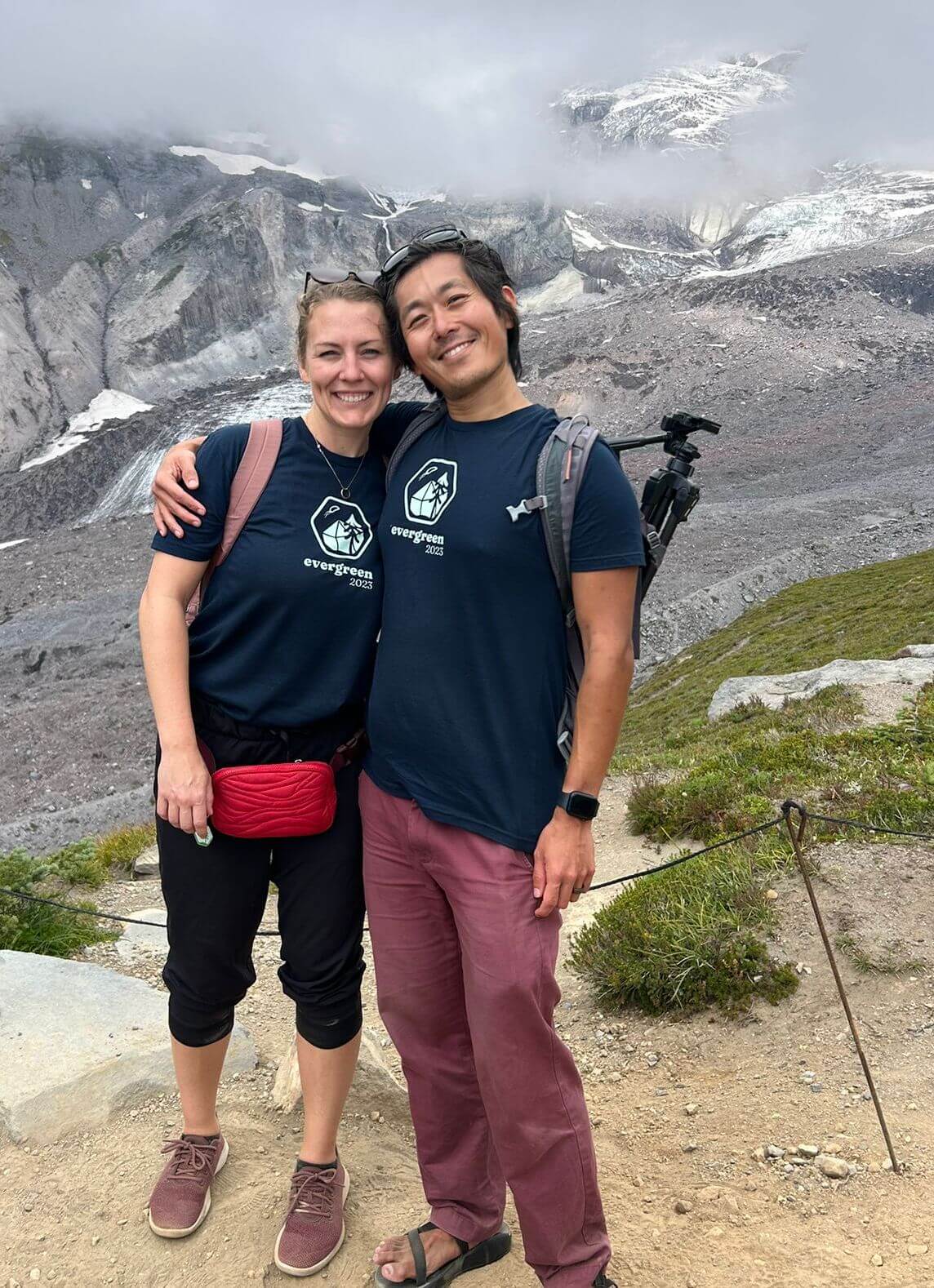
Fig 15. Me and Jessica at Mt. Rainier! Too bad it was cloudy… we’ll get a weather modification device next time.

